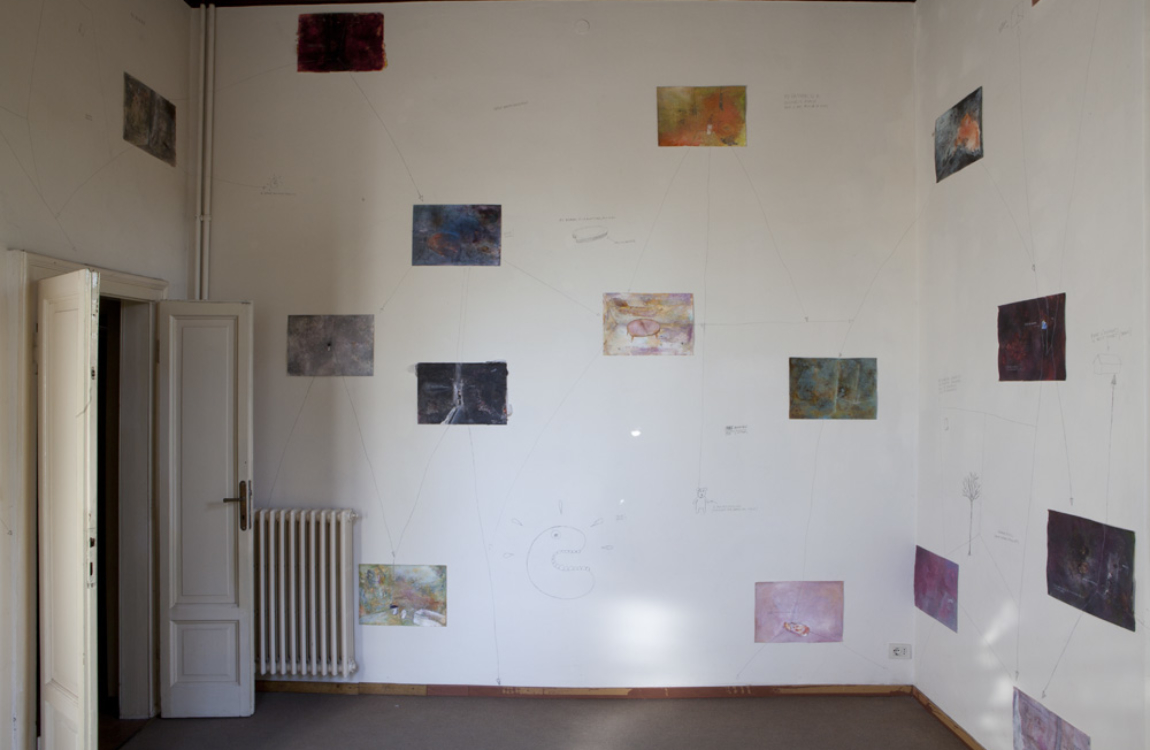Room 10
I’ve just thrown dozens of drawings, notes and a few projects into the rubbish bin which I probably would have kept and turned into work if I had been careful, but I need to see some new space and I’ve got rid of them.
Now my studio is completely empty and I feel at home.
The space of the painting is again clear and I can decide to cross the threshold, but not immediately; for a few moments I still savour the opportunity to have empty space.
No weight or encumbrance shows itself to my gaze, I feel good. I see!
Now new images are appearing and this causes me excitement.
I have a hard time holding back, but I must resist, I must stay calm: careless gestures in this moment of weightlessness can compromise everything.
The private magic of this void lasts a few moments, moments in which no signal is active, just me and this luminous space around me. I remain motionless as long as possible, but standing still is not easy, and soon after, I start to move and end up inside it. I leave.
On my return I discover with amazement that new projects and new images have appeared in the studio, what do I do? Do I wait?
No. I leave and try to sleep, but I wake up early, return to the studio and discover that the bin opposite is empty again… I can’t resist, I feel the urgent need to throw everything away. I do it. I see the beloved space again.
I start again.
Massimo Uberti
Massimo Uberti is an artist of light, who intervenes in space, transforming it into a magical game of constructions and allusions, shapes and ideas. For more than a decade he has been using white neon tubes to compose metaphysical images and design virtual environments, suspended in the poetic and revealing time of the art (of lighting). Simple light profiles bring us closer to the intellectual practice of language (Scrittoio, 2000) or introduce us to the image of the most familiar place (Avvolgente casa, 2009). More articulated and complex light installations project us into the spatial illusion of the unlimited (Senza fine, 2006) and into the temporal aspiration of the endless (Tendente infinito, 2008). Neon signs announce the textual assumption (in art) of a dimension that is both physical and mental, concrete and ideal (Spazio amato, 2008; Altro spazio, 2010).
The latest creation, conceived for Casa Testori, combines in the emptiness of a room structural elements usually used as supports, superimposed on each other, with horizontal luminous segments of increasing size, fixed at regular intervals and intersecting with the former: a progressive and expansive work, which rises from the material to the ethereal, from the real to the apparent, from the corporeal to the affective (Giorni felici, 2011).Stefano Pezzato
Massimo Uberti was born in 1966 in Brescia, where he lives and works.





















































































